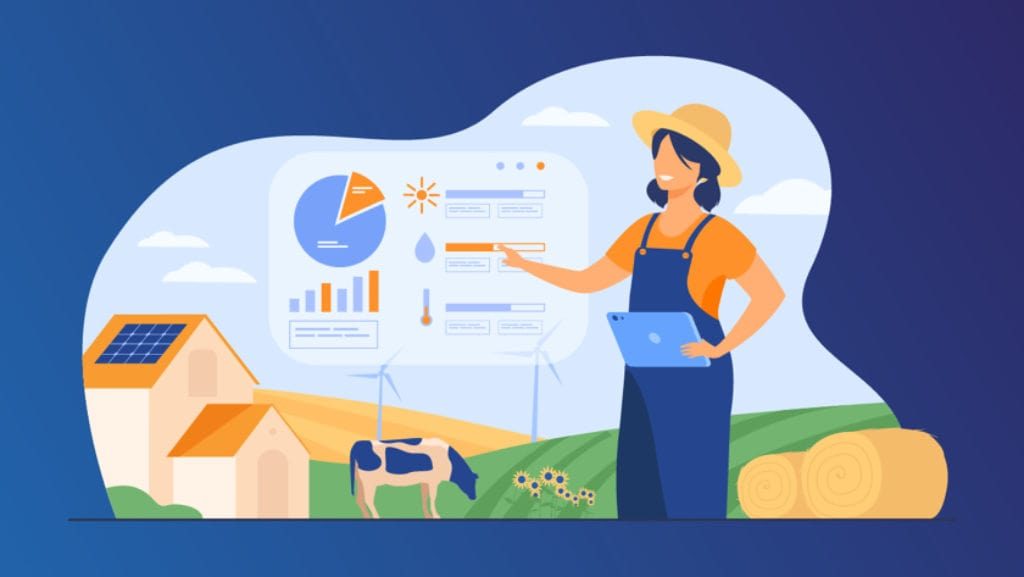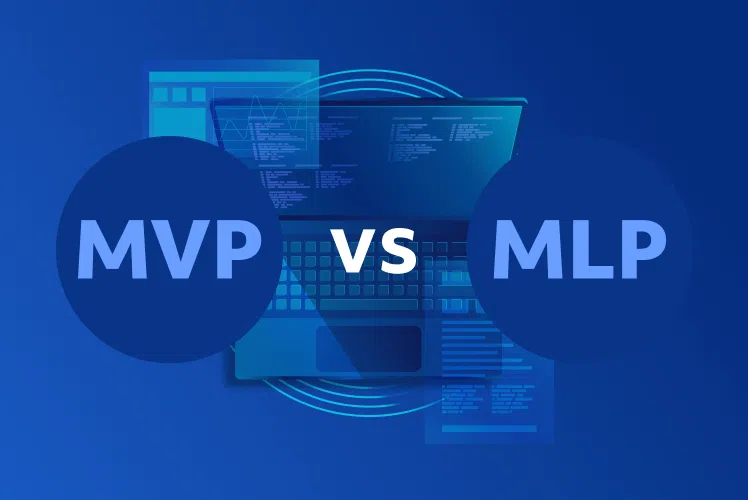Table of Contents
According to Statista, the global agricultural IoT market size in 2023 was approximately $28.64 billion, growing almost twice in comparison to 2018. These numbers do not come as a surprise due to the fact that IoT has proven to be a highly valuable asset for farmers and business within the agricultural sector. The level of innovation and optimization that this technology brings is unmatched, especially combined with other advanced technologies like Machine Learning.
But what exactly is IoT in agriculture, and how does it benefit modern farmers? Below, we discuss the topic in detail.

What is IoT in agriculture?
In recent years, the agriculture industry has seen a major digital transformation that changed the way farmers perform certain activities. These changes led to a new term emerging, which is AgTech.
AgTech, short for Agricultural Technology, implies the use of technology in agriculture to increase the efficiency and speed of processes. However, optimized production is not the only goal here. The incorporation of advanced technologies in agriculture also leads to more sustainable and environmentally friendly production. Think of smart sensors that help detect hiding animals during harvesting, or of smart use of energy that reduces the amount of harmful emissions.
The role of IoT in agriculture is very significant and it is one of the cornerstones of precision farming (we’ll discuss it in detail a bit later). IoT is used in a number of devices like sensors and drones and helps automate and optimize various processes as well as collect real-time data. Hence, the biggest benefits that IoT brings to the industry are saving of costs, increased efficiency, and reduced harmful impact on the environment.
Explaining precision farming
Before looking at specific use cases of IoT for agriculture, let’s talk a bit about the precision farming and what exactly it means. It is a strategy that “focuses on observation, measurement and response to variability in animals, crops, and fields” (as per the definition by the European Commission). In other words, it is an approach to agriculture that is heavily based on the data. The main goal of precision farming is to eliminate waste while preserving available resources.
If you need an example of IoT in agriculture, think of the following. Precision farming uses real-time data, collected by IoT devices, to help farmers understand how many fertilizers an exact crop needs. This is possible due to evaluation of the soil and environmental conditions via smart sensors. In this way, IoT completely eliminates the guesswork and thus helps farmers better control and allocate their resources.
Smart agriculture using IoT: top technologies
We’ve already mentioned a few examples of how IoT is integrated in the farming process via sensors. Now, let’s look at the main technologies in the agricultural sector that are powered by IoT.
Robots
Robotic Process Automation (RPA) is nothing new these days. Robots are widely used across various industries, and IoT agriculture is no exception. With the help of robots, farmers can automate and speed up many critical activities, minimize a possibility of a human error, and improve the overall efficiency. Some examples of using robots in agriculture are:
- Elimination of weeds: by using computer vision and IoT sensors, robots can detect the unwanted weeds among crops and either apply pesticides or weed them out. Such automatic monitoring is far more effective than the manual one and takes less time to complete.
- Harvesting: similar to weeding robots, robots use image processing and IoT to detect whether fruits and vegetables are ready to be harvested. Automatic harvesting also helps solve the problem of labor shortage, which is a great advantage.
- Packing: one more great application of robots in agriculture is packing. Considering that it’s almost always performed on a conveyor belt, the use of robots adds to its speed and efficiency.
- Seeding: robots can also effectively perform the seeding process, which, if done manually, can take quite a long time and lots of effort.
And these are just a few of the examples. As you can see, robots successfully take over mundane tasks and allow farmers to focus on more critical and complex ones. And IoT aids robots a lot by collecting information about the state of soil and crops, thus impacting their further actions.
Sensors
Let’s explain the already mentioned sensors in more detail. IoT sensors are small devices that collect real-time data (like temperature, humidity) and transmit the information to the server. The server then processes the data and sends it to a smart IoT device, thus resulting in a certain action. Say, if the IoT sensors detect unexpectedly dry soil, the information will be sent to robots responsible for watering. In this way, these devices in agriculture constantly communicate with each other and create a smart, data-driven network.
In agriculture, IoT sensors are used to monitor:
- Temperature
- Humidity
- Soil acidity and moisture
- Cattle movement
- Cattle health
- Plant growth morphology
- Light intensity
- pH values
- CO2 concentration
All this information is crucial and serves as a base for precise farming, enabling farmers to always know the state of their crops and livestock and to quickly react to any incidents.
Drones
Drones have become quite widespread these days, and agriculture is among the industries that use them the most. Considering the vast size of farming land areas, it will take too much time to manually inspect them. Hence, automatic drones that do not require manpower to operate them, become priceless assistants in collecting the data, monitoring the area, and even performing simple tasks like spraying or planting crops.
There are two types of drones used in agriculture: ground-based and aerial UAVs (unmanned aerial vehicles). Drones can also be either controlled remotely or act completely autonomously. Thus, considering the value that drones bring, they will most probably become one of the cornerstones of Precision Farming, allowing farmers to always be aware of the state of their farm and to act accordingly.
Computer vision
One more technology that forms AgTech and works well in conjunction with IoT is computer vision. In simple terms, it is the ability of a machine to “understand” and process the image and retrieve valuable information from it.
In the context of agriculture, computer vision eliminates the need to manually check crops and livestock and provides farmers with information on their current state. This is highly useful because not only do smart devices perform analysis but also notify farmers immediately in case anything suspicious is detected.
Internet of Things in agriculture: top use cases
We’ve talked about the main technologies that deploy IoT to transform agriculture – now let’s look at the top use cases and practical examples.
Livestock monitoring
The use of IoT sensors and drones allows farmers to better monitor their livestock in terms of its location, movements, and even health. By using real-time data, farmers always know where exactly the cattle is and whether all animals are healthy or not. This approach greatly reduces the amount of potential diseases, enables farmers to act proactively, and reduces labor costs since there is no need to check on animals in person all the time.
Smart greenhouses
The greenhouse management consists of many aspects and includes a great number of activities, from watering to maintaining the needed humidity levels. All this can be automated and optimized with the help of IoT. By collecting various data via smart sensors, farmers can remotely manage the greenhouse climate and thus increase the production of crops and improve their health.
Predictive analytics
Based on Machine Learning and data, predictive analytics allows building accurate future forecasts and adjust one’s business strategy correspondingly. In terms of agriculture, predictive analytics greatly helps in identifying customers’ demand, amount of crops needed for the future, possible environmental conditions, and other factors that might impact the yield.
Crop monitoring
Same as livestock monitoring, crop monitoring includes a number of activities aimed at monitoring the health of crops and their environmental conditions. A good example of a smart agriculture system using IoT is sensors that collect information about soil acidity or humidity, thus informing farmers about necessary activities like watering or increasing the number of fertilizers. As well, farmers can use computer vision and image processing to identify whether all crops are healthy and whether there are any unwanted weeds.
Precision farming
We’ve talked a bit about precision farming, but let’s now look at what exactly it means. Precision farming uses predictive analytics, crop and livestock data, and automation to help farmers learn what exact resources are available and needed, what requires immediate attention, and how to plan further activities. In this way, by deploying IoT, smart farming includes maximized production, better allocation of resources in an environmentally friendly manner, and reduction of labor and operating costs.
The main challenges of IoT in agriculture
Though IoT in smart agriculture is highly beneficial, it also poses several challenges and considerations. Below, we list the main things to keep in mind before implementing an IoT-based solutions.
Availability of resources
Implementation of every new technology calls for the review of your existing assets and whether they are capable of supporting this technology properly. In the case of IoT, you will have to think of both hardware (i.e., sensors) and software. For example, do you have a database powerful enough to process the expected volumes of data? How will your IoT devices integrate with the existing system or with other devices? These and other questions need to be answered in advance so that the IoT implementation brings benefit, not financial losses and downtime.
Security
Since smart devices process great amounts of data on a regular basis, they call for an extra level of protection. Hence, before implementing IoT, you will have to think about your security strategy, review existing policies, and plan how you will safeguard the data and software against potential threats. Note though that security needs to be implemented on all levels of your business, and you will most probably have to provide employee training to ensure that everyone understands the importance of security and new policies that you will introduce.
Interoperability
You expect your IoT system to bring benefit to your business – but what if it’s not compatible with your existing systems, equipment, and devices? Hence, interoperability is crucial when planning the IoT integration as it not only ensures seamless functioning of the whole system but also smooth and secure data exchange.
Scalability
It’s natural that your business grows gradually, and so do your software solutions. Hence, when designing an IoT system, make sure it is scalable (i.e., you can add sensors to it later on, etc.) and is capable of handling the growing load.
A case from SoftTeco: an IoT wildlife protection system
SoftTeco’s client requested us to develop a mobile application for an IoT system that would detect animals hiding in the grass or crops. The main idea behind this request was the fact that during the mowing process, some animals get trapped because the mower operator is unable to detect them. Hence, the client needed a solution that would timely detect an animal with sensors placed on the mower and immediately notify the operator.
SoftTeco created an iOS application that connects with the sensors via Bluetooth. With the help of this IoT app, users can receive timely notifications, configure the sensors’ sensitivity, place and save GPS marks to tag the detected animals, and create notes. The application serves as a valuable asset for the farmers and helps preserve the wildlife by ensuring wild animals do not get in the danger zone.


Comments